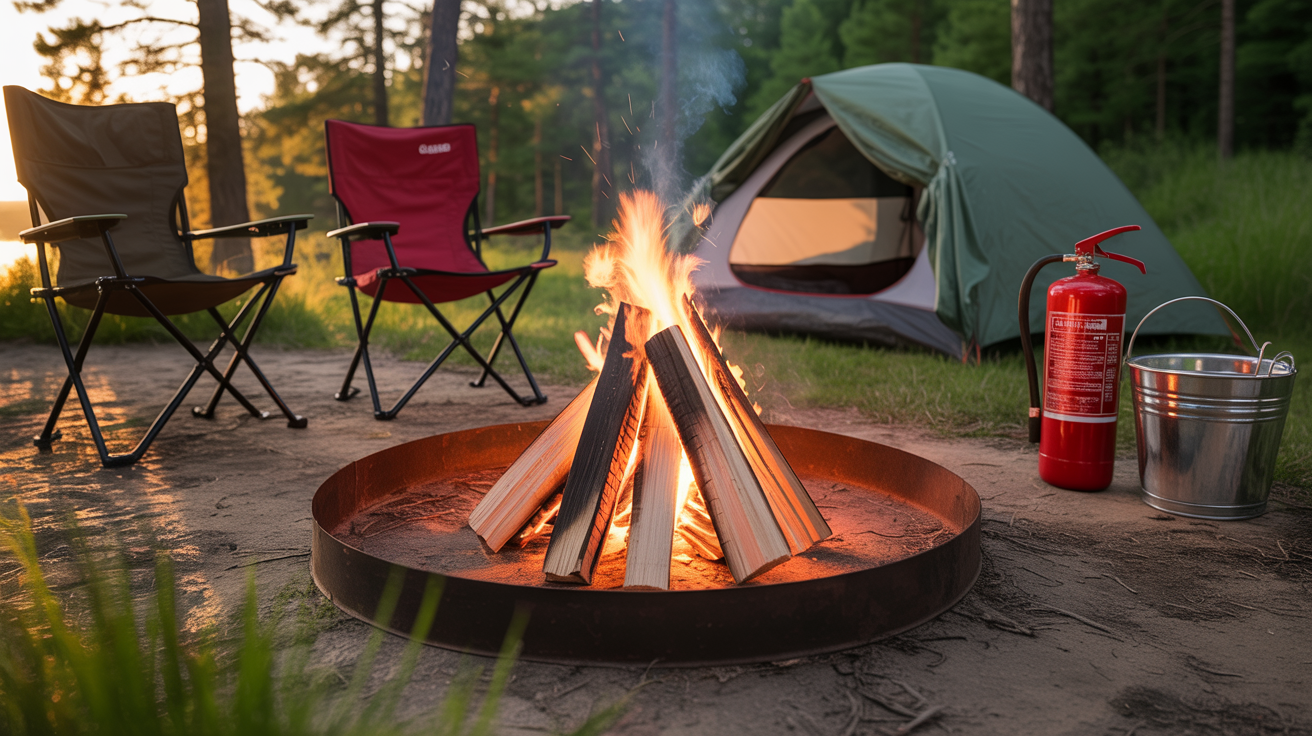Camping Fire Safety Guide
Essential guide to safe campfire practices and preventing wildfires during outdoor recreation. 90% of wildfires are caused by human activity, many starting from unattended campfires.

Camping Fire Statistics
Before You Light a Campfire
Check Local Fire Restrictions
Always verify current fire restrictions and bans in your camping area. During dry conditions, campfires may be prohibited entirely.
Choose a Safe Location
Use established fire rings when available. Clear a 10-foot diameter area around your fire site down to mineral soil. Never build fires near overhanging branches or dry grass.
Gather Water and Tools First
Have a shovel and plenty of water ready before lighting any fire. Never leave your campsite to gather these items after starting a fire.
Use Only Local Firewood
Purchase or gather firewood within 50 miles of your campsite to prevent spreading invasive species and pests. Never burn treated wood, plastics, or trash.
Safe Campfire Practices
Keep Fires Small and Manageable
A fire that's too large is dangerous and difficult to control. Keep your campfire small enough that you can quickly extinguish it if needed.
Never leave a fire unattended - Even for a few minutes. Assign someone to watch the fire at all times.
Monitor wind conditions - Don't start a fire if it's windy. Wind can quickly spread embers and cause fires to grow uncontrollably.
Keep children and pets at safe distances - Establish a "fire safety zone" at least 3 feet around the fire.
Be prepared to extinguish quickly - Have fire suppression equipment (water, shovel, fire extinguisher) within easy reach.
Properly Extinguishing Your Campfire
Critical: Start extinguishing your campfire at least 20 minutes before leaving your site or going to sleep.
Step-by-Step Extinguishing Process
- Drown the fire with water - Pour water over all embers, not just the red ones. Drown all embers completely.
- Stir the ashes and embers with a shovel - Mix water and ashes together thoroughly. Scrape any remaining sticks and logs to remove embers.
- Add more water - Continue adding water and stirring until you hear no more hissing sounds.
- Feel for heat - Carefully feel all materials with the back of your hand to ensure nothing is still warm. If it's too hot to touch, it's too hot to leave.
- Dispose of ashes properly - Once completely cold, scatter the ashes over a wide area away from camp or dispose in designated ash containers.
If Your Campfire Escapes Control
Immediate Action Steps
- Alert everyone nearby - Shout "Fire!" to warn other campers
- Call 911 immediately - Report the location and size of the fire
- Attempt to extinguish only if safe - Use water, dirt, or a fire extinguisher
- Evacuate if fire spreads - Move uphill and away from the fire path
- Never try to outrun an uphill fire - Fires travel faster uphill than you can run
Essential Camping Fire Safety Equipment
Portable Fire Extinguisher
Lightweight fire extinguishers like the LifeSafe StaySafe All-in-1 are perfect for camping. They handle wood fires, cooking oil fires, and even lithium battery fires from portable devices.
- ✓ Weighs only 600g
- ✓ Works in any position
- ✓ No cleanup required
- ✓ No training needed
Basic Safety Tools
- Shovel: For moving dirt and stirring ashes
- Water containers: At least 5 gallons
- Fire-resistant gloves: For handling hot materials safely
- Flashlight/headlamp: For nighttime fire monitoring
Remember These Key Points
✓ Check fire restrictions before every trip - Conditions change rapidly
✓ Keep fires small - Easier to control and extinguish
✓ Never leave fires unattended - Not even for a minute
✓ Start extinguishing early - 20+ minutes before leaving or sleeping
✓ Dead out means dead out - Fires can smolder for hours and reignite
✓ When in doubt, don't light it - Alternative camping stoves are safer in many conditions